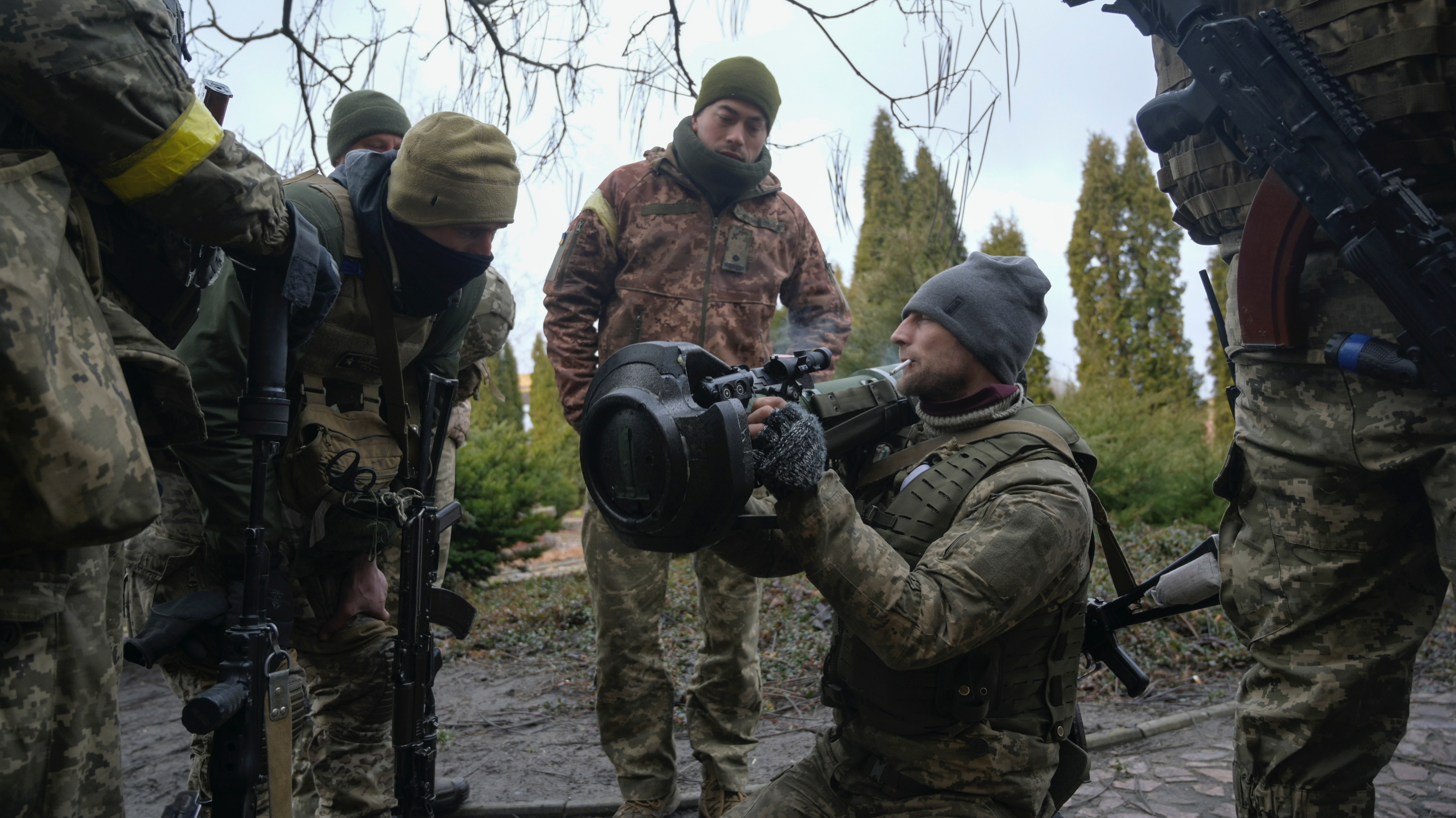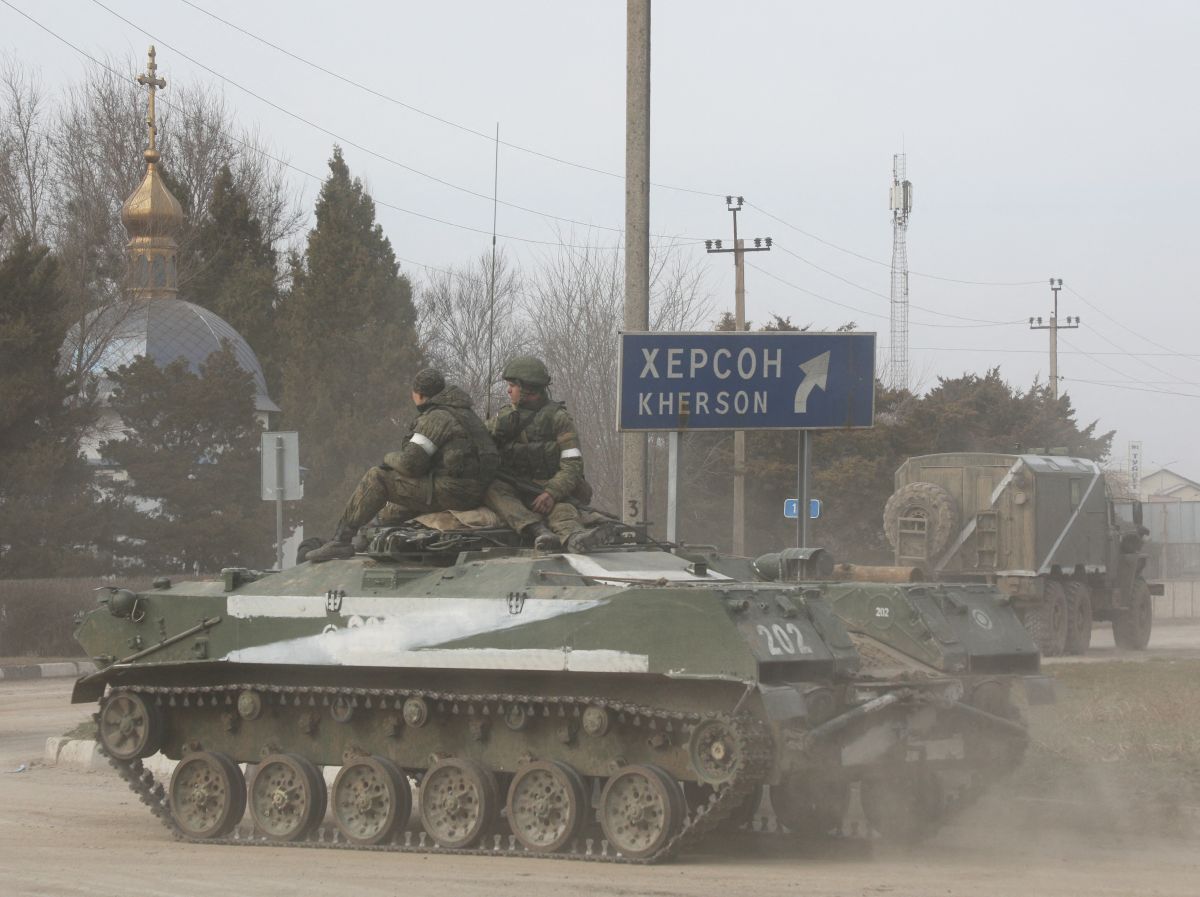The Course of the Hostilities in Ukraine
On the ninth day of military operations in Ukraine, Russian troops continued to focus on four directions of attack, the most important of which, politically and militarily, is Kyiv. Russian forces face considerable resistance from the Ukrainian army and the society. In the coming days, it is excepted that humanitarian corridors for the evacuation of civilians from the encircled cities will be established.
 Fot. MAKSIM LEVIN/Reuters/Forum
Fot. MAKSIM LEVIN/Reuters/Forum
What has Russia’s military operation looked like so far?
Russian forces are operating in four directions. For political reasons, the most important is the attack on Kyiv, aimed—so far unsuccessfully—at completely encircling and capturing the city. In the last hours of 4 March, fights were taking place in the suburbs of the Ukrainian capital. The Russian troops attempted, unsuccessfully, to conduct subversive operations and activities probably aimed at assassinating President Volodymyr Zelensky. There is also military action in the south and southeast of Ukraine. The main mission carried out from occupied Crimea and territories controlled by the so-called separatists is cutting off Ukraine from the Azov Sea. Intense fighting is taking place around the encircled Mariupol. Military operations are also underway in the Zaporizhzhia Oblast, where Russian forces took control of the Zaporizhzhia nuclear power plant, the largest in Europe. An offensive towards Mykolaiv is also starting from Crimea and Russian troops managed to capture Kherson. The fourth course of action is in the east and northeast of Ukraine to encircle and capture Kharkiv. There, however, Russia still has not managed to achieve its goals.
What are the Russian aims?
In a telephone conversation with French President Emmanuel Macron on 3 March, President Vladimir Putin maintained that Russia’s goal is “denazification” and “demilitarisation” of Ukraine, and that these tasks would be fulfilled regardless of the outcome of the talks between the Russian and Ukrainian delegations that met that day in Belarus. It is clear that for now, Russia, regardless of the political and economic costs, will continue its military operations. Its aim is to impose unfavourable conditions of peace on Ukraine and overthrow the Ukrainian authorities. At this stage of the fighting it is too early to predict what, according to Russia, would be the shape of the boundaries of the state entity created in this way, what its political system would look like, or who would govern it. However, it can be assumed with high probability that Russia will not voluntarily withdraw from the occupied territories in the east and south of Ukraine.
In what military actions is the Ukrainian side engaging?
Ukrainians are defending their country across its territory using Western-sourced and other weapons, especially man-portable anti-tank and anti-aircraft systems and drones. Ukrainian units are at least delaying the Russian offensive, and sometimes also counterattack, such as on 3 March in the vicinity of Kyiv (including the town of Bucha and Hostomel airport). According to the Ukrainian General Staff’s morning announcement on 4 March, Russia’s losses number more than 9,000 troops, 251 tanks, 939 infantry fighting vehicles, 105 artillery systems, 50 multi-rocket launchers, 33 airplanes, 37 helicopters. Although these data cannot be verified, they suggest that the Ukrainian Armed Forces are very determined and effective in defending the country.
Ukraine is also active in cyberspace. Ukraine’s deputy prime minister and minister for digital transformation, Mykhailo Fedorov, asked IT specialists from around the world for support in the fight against Russia. In the digital war, Ukraine is supported by hacker groups (including the Anonymous collective). An important element of Ukraine’s defence is also conducting psychological operations and putting pressure on the enemy through actions in the infosphere.
What will further hostilities look like?
Russia still has significant military resources that can mobilise for action in Ukraine. A transfer of forces mainly from the Southern and Eastern Military Districts can be expected. Russia may also increase the use of national guard troops for rear protection and to protect the new occupation authorities in areas already controlled by Russia. Most likely, the activities aimed at capturing Kyiv will intensify. Due to the tense situation on the Belarusian-Ukrainian border, Russian provocations aimed at drawing Belarusian troops into the fight can be expected. An attempt to carry out a sea landing in Odesa is also more and more likely, although Russian forces can expect significant resistance there.
What is the humanitarian situation?
The ongoing fighting, the growing number of cities under fire and encircled, and Russian control over some roads in eastern Ukraine are quickly degrading the living conditions of civilians, who have not only come under attack by Russian troops but also have increasingly difficult access to food and medicine. Therefore, there is an urgent need to create humanitarian corridors, enabling provisioning and evacuation. This issue was one of the topics discussed by the Russian and Ukrainian delegations on 3 March. Polish Foreign Minister Zbigniew Rau, who is also the OSCE chair for this term, also called for such steps. The Ukrainian and Russian sides have initially agreed to them, but the details are yet to be negotiated. To ensure the safety of evacuees, they should be supervised by international organisations, such as the UN or the OSCE. However, Russia likely will block such action. Support for the civilian population also can be provided by the International Red Cross.




